- Administrator
- Albums and Singles
 Chris Brokaw is known to many as a founding member of Come, and morerecently as a member of Consonant and the New Year, though he hasplayed drums and guitar wherever needed on a number of releases fromPullman to Evan Dando's latest solo effort. Last year he made his solodebut on Red Cities,showing off for the first time his skills at songwriting with hisalready established abilities on guitar. The limited edition Wandering as Wateris the subtle follow-up, part of the Return to Sender series thatshowcases vibrant artists in their rawest form. For Brokaw that meantrecording fifteen songs in one day, played on guitar and tambourine.Some songs are his, some familiar favorites from his Come days, butthey're all fueled by his very quiet and solid musicianship. It's acalm, soothing record in most places, and Brokaw divides it evenly withinstrumental and vocal tracks. Where he has a capable voice, it is onthe tracks where he doesn't sing that Brokaw has the most success. Hisguitar playing is fluid and energetic.The sounds of a small town life escape from the speakers, of simplertimes when all you needed was a nickel at the country store.Considering the minimal percussion, it's also incredible how full thesesongs sound, and for the most part there isn't a flaw to speak of. Onthe songs with vocals, Brokaw stumbles a bit, where his inflections andnotes can warble or even slightly irritate: "My Confidante," with itsopening of "I threw up on the side of the road/Thirty miles from thePoconos," is almost treacherous in every respect, particularly the howlof the chorus. Thus, it almost makes sense that until now Brokaw hasbeen known solely as a musician, and perhaps that's why he excels atthat so well. Here and there, though, the vocals work, like on Come's"Shoot Me First." It's only when he really tries for that note or overemphasizes that the car veers every so slightly into the shoulder.While I think that with a few more releases under his belt, his singingand songwriting will undoubtedly both improve, on repeat listens of Wandering, however, I'll probably just stick to the instrumentals.
Chris Brokaw is known to many as a founding member of Come, and morerecently as a member of Consonant and the New Year, though he hasplayed drums and guitar wherever needed on a number of releases fromPullman to Evan Dando's latest solo effort. Last year he made his solodebut on Red Cities,showing off for the first time his skills at songwriting with hisalready established abilities on guitar. The limited edition Wandering as Wateris the subtle follow-up, part of the Return to Sender series thatshowcases vibrant artists in their rawest form. For Brokaw that meantrecording fifteen songs in one day, played on guitar and tambourine.Some songs are his, some familiar favorites from his Come days, butthey're all fueled by his very quiet and solid musicianship. It's acalm, soothing record in most places, and Brokaw divides it evenly withinstrumental and vocal tracks. Where he has a capable voice, it is onthe tracks where he doesn't sing that Brokaw has the most success. Hisguitar playing is fluid and energetic.The sounds of a small town life escape from the speakers, of simplertimes when all you needed was a nickel at the country store.Considering the minimal percussion, it's also incredible how full thesesongs sound, and for the most part there isn't a flaw to speak of. Onthe songs with vocals, Brokaw stumbles a bit, where his inflections andnotes can warble or even slightly irritate: "My Confidante," with itsopening of "I threw up on the side of the road/Thirty miles from thePoconos," is almost treacherous in every respect, particularly the howlof the chorus. Thus, it almost makes sense that until now Brokaw hasbeen known solely as a musician, and perhaps that's why he excels atthat so well. Here and there, though, the vocals work, like on Come's"Shoot Me First." It's only when he really tries for that note or overemphasizes that the car veers every so slightly into the shoulder.While I think that with a few more releases under his belt, his singingand songwriting will undoubtedly both improve, on repeat listens of Wandering, however, I'll probably just stick to the instrumentals. samples:
Read More
- Administrator
- Albums and Singles
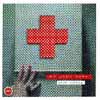 Much like Manual, this EP release follows suit from a notable full-length release also on Morr Music last year. However, the chances taken here almost (but don't quite) work for me. The production is fantastic—the inclusion of cello, other voices, sound effects, and non-traditional instruments is a warm variety to the ingredients. It compliments the music nicely but somehow the songs just don't sound that strong.
Much like Manual, this EP release follows suit from a notable full-length release also on Morr Music last year. However, the chances taken here almost (but don't quite) work for me. The production is fantastic—the inclusion of cello, other voices, sound effects, and non-traditional instruments is a warm variety to the ingredients. It compliments the music nicely but somehow the songs just don't sound that strong.
The lead song, "No. One" is an upbeat maximalistic rocker which is decent but not nearly as catchy as some of the highlights of Ms. John Soda's debut album (the counting vocals and frequent stops aren't much more than a mild annoyance), while the second track, "Sometimes Stop, Sometimes Go" has some beautiful moments. Each, however, are sort of ruined by Stephanie's frequent talking. She's got such an alluring singing voice that I wish she would only sing these tracks rather than hide behind spoken word interludes. The third cut, "I & #8217" begins as a mishmash of sounds and samples from the No P or D album, but as it's re-pasted back together, vocals and additional instruments are added by Subtle (which features unnamed Anticon members - although Dose One's voice is clearly audible). It's an interesting concept but at four minutes doesn't sound like it's beed explored to the full extent. The disc continues with the creepy late-night car wreck devastation score in the form of the slow moving "If Someone Would Know," and closes the almost unbearingly heavy dialogue of "I think it could work, Marilyn," where Stephanie is almost playing dolly, talking as the fictitious voices of Elvis and Marilyn in a situation far more interesting to read about than to hear. I honestly hope this is the last they come this close to making a "spoken word" record. The good thing about the EP is that it's been made with the intentions of selling on the upcoming European and North American shows: shows I'm anxiously looking forward to. I remain enthusiastic and firmly believe that this EP, while mildly anticlimactic, isn't going to lose any existing fans at all.
samples:
Read More
- Administrator
- Albums and Singles
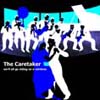 There's something unspeakable wandering the halls of a deserted hotel somewhere in the past and its sound has been captured so that all can know it. Salvaged from dusty records in plain white and brown sleeves, these recordings take a decidedly darker stroll into the halls of forgotten happiness and celebration. The Caretaker has managed to take the deserted and neglected and give them new life by expanding their sound: horns blasting for the satisfaction of dancing men and women are slowed down to funeral marches and the static and hiss of old records become the wind and rain as it toils outside the windows of a shining and elegant ballroom. There's an element of surgery in The Caretaker's approach: that which must've seemed so vibrant and brimming with life is torn open so reveal something betraying that image inside. Everyone had their demons at this party and each of them were quite desperate to hide that little part of themselves; fear had its axe in everyone's back. But there's more going on here than just psychological investigation: The Caretaker strips back a little bit of reality to reveal the void underneath everything.
There's something unspeakable wandering the halls of a deserted hotel somewhere in the past and its sound has been captured so that all can know it. Salvaged from dusty records in plain white and brown sleeves, these recordings take a decidedly darker stroll into the halls of forgotten happiness and celebration. The Caretaker has managed to take the deserted and neglected and give them new life by expanding their sound: horns blasting for the satisfaction of dancing men and women are slowed down to funeral marches and the static and hiss of old records become the wind and rain as it toils outside the windows of a shining and elegant ballroom. There's an element of surgery in The Caretaker's approach: that which must've seemed so vibrant and brimming with life is torn open so reveal something betraying that image inside. Everyone had their demons at this party and each of them were quite desperate to hide that little part of themselves; fear had its axe in everyone's back. But there's more going on here than just psychological investigation: The Caretaker strips back a little bit of reality to reveal the void underneath everything.
This explains the reason for all the sounds being so spacious: voices extended into the unintelligible, drums turned into drones and smoke, and strings diminished to hollow wails. The good news is that the fear never becomes too great and the void never feels all-consuming. The sounds and sights to be found on this release can be explored with confidence: whatever it is that is lurking through these distorted and destroyed melodies certainly cannot cause any permanent damage, right? Even this seems uncertain, really. "And The Bands Played On" is a reminder that nothing is for certain and that whatever certainty is assumed is truly dangerous. From start to finish, We'll All Go Riding on a Rainbow is filled with absolutely haunting and unmitigated sound. There are points when it is impossible to tell whether the sounds being heard are really from a lost record or from some lurking and abnormal creature not subject to a name or description.
Read More
- Administrator
- Albums and Singles
 EPs are a tough sell. Ounce for ounce, this is probably Jonas Munk'sbest release. It combines all of his best skills in four songs whichnaturally play out with a complete indifference to a 4-6 minuteunwritten guideline for album collections of 8-10 songs. At 24 minutes,it's the perfect amount of time to experiment without wearing out yourwelcome. In addition, it's a good breather from the wealth of outputthat's not been the easiest to keep up with. However, priced as high asit is (and as most EPs are), it'll probably be his least heard. On the(not-so-ironically titled) opener "A Familiar Place," Munk hasn'tstepped far from the sounds and styles of his other output: simple butlush, heavily emotional, slightly pitch-bent synth melodies loop intime with a steady pulse and musical electronic percussion. Both hereand on "Wake," angelic female vocals have been added, but the additionis never oppressive nor distracting from the music. On "StealingThrough," and "Horizon," however, Munk takes a step in removingelements, yanking beats out completely and leaving the former as asimple guitar piece with faint echoes and the latter as a stunning 8½minute gem of bright swelling synths that are as blinding and gorgeousas a setting sun. With this, I look forward to hearing the directionManual moves on to but at the same time, I'm patiently satisfied fornow.
EPs are a tough sell. Ounce for ounce, this is probably Jonas Munk'sbest release. It combines all of his best skills in four songs whichnaturally play out with a complete indifference to a 4-6 minuteunwritten guideline for album collections of 8-10 songs. At 24 minutes,it's the perfect amount of time to experiment without wearing out yourwelcome. In addition, it's a good breather from the wealth of outputthat's not been the easiest to keep up with. However, priced as high asit is (and as most EPs are), it'll probably be his least heard. On the(not-so-ironically titled) opener "A Familiar Place," Munk hasn'tstepped far from the sounds and styles of his other output: simple butlush, heavily emotional, slightly pitch-bent synth melodies loop intime with a steady pulse and musical electronic percussion. Both hereand on "Wake," angelic female vocals have been added, but the additionis never oppressive nor distracting from the music. On "StealingThrough," and "Horizon," however, Munk takes a step in removingelements, yanking beats out completely and leaving the former as asimple guitar piece with faint echoes and the latter as a stunning 8½minute gem of bright swelling synths that are as blinding and gorgeousas a setting sun. With this, I look forward to hearing the directionManual moves on to but at the same time, I'm patiently satisfied fornow.samples:
Read More
- Administrator
- Albums and Singles
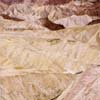 It was a shock to me to find out that this was recorded live. Thearchitecture of the whole album is so well constructed that I was sureit was a studio album when I first listened to it. After payingattention to the liner notes, I realized that this was all done as aperformance without the help of editing. The music itself is a seriesof background drones recalling the feeling of winds blowing across avast desert, ominous hums that, for some reason, remind me ofstormtroopers and weaponry approaching over the horizon, and variousfound sounds tossed about as if in a blender. Here and there a guitarplucks some melodic but repetitive notes and builds a tension alreadypresent to a nice crescendo. The various sounds that cut into thewavering background range from the aquatic and metallic to the sci-fiand terrestrial. What's interesting is that after repeated listens theybegin to sound like melodies of noise. Either this is the result oflucky improvisation or it was a well-planned effect. In either case,there's something fairly impressive about the way these sounds aremanipulated and used. Backwards flutes and brief bursts of femalevoices either singing or talking cut into metallic chunks being groundtogether. The tension between these two samples resolves itself intothe sound of car horns pitched and extended creating a harmony betweenthe crunchy sounds of natural resources and the resonance of musicalelements. The two tracks here are quite long and can have someuneventful stretches but these are usually brief and do little todistract from the captivating moments. Did I mention that much of whatis featured here is done on turntables? I'm not quite sure how thesounds on this record were achieved by turntables and I doubt that theyweren't filtered and disturbed live by Pure and Martin Siewert butthere's really no indication that anything on this record was made withthe help of vinyl. The mystery, the music, the noise, and the overallatmosphere on Just In Case... are excellent and worth coming back to again and again because each listen brings out something new.
It was a shock to me to find out that this was recorded live. Thearchitecture of the whole album is so well constructed that I was sureit was a studio album when I first listened to it. After payingattention to the liner notes, I realized that this was all done as aperformance without the help of editing. The music itself is a seriesof background drones recalling the feeling of winds blowing across avast desert, ominous hums that, for some reason, remind me ofstormtroopers and weaponry approaching over the horizon, and variousfound sounds tossed about as if in a blender. Here and there a guitarplucks some melodic but repetitive notes and builds a tension alreadypresent to a nice crescendo. The various sounds that cut into thewavering background range from the aquatic and metallic to the sci-fiand terrestrial. What's interesting is that after repeated listens theybegin to sound like melodies of noise. Either this is the result oflucky improvisation or it was a well-planned effect. In either case,there's something fairly impressive about the way these sounds aremanipulated and used. Backwards flutes and brief bursts of femalevoices either singing or talking cut into metallic chunks being groundtogether. The tension between these two samples resolves itself intothe sound of car horns pitched and extended creating a harmony betweenthe crunchy sounds of natural resources and the resonance of musicalelements. The two tracks here are quite long and can have someuneventful stretches but these are usually brief and do little todistract from the captivating moments. Did I mention that much of whatis featured here is done on turntables? I'm not quite sure how thesounds on this record were achieved by turntables and I doubt that theyweren't filtered and disturbed live by Pure and Martin Siewert butthere's really no indication that anything on this record was made withthe help of vinyl. The mystery, the music, the noise, and the overallatmosphere on Just In Case... are excellent and worth coming back to again and again because each listen brings out something new. samples:
Read More
- Administrator
- Albums and Singles
 Earlier this year Autechre curated the fifth All Tomorrow's Parties festival, and of that bounty comes this, actually the fourth ATP compilation. All Tomorrow's Parties comps have never been more than glorified mixtapes ("ultimate" mixtapes according to Thurston Moore), thoughtfully scratching the surface of one of the best large-scale concert series; Autechre's volume, though, is the first with potential to transcend its posterity-building, afterthought status, becoming an (almost) essential collection.
Earlier this year Autechre curated the fifth All Tomorrow's Parties festival, and of that bounty comes this, actually the fourth ATP compilation. All Tomorrow's Parties comps have never been more than glorified mixtapes ("ultimate" mixtapes according to Thurston Moore), thoughtfully scratching the surface of one of the best large-scale concert series; Autechre's volume, though, is the first with potential to transcend its posterity-building, afterthought status, becoming an (almost) essential collection.
This is the first double-disc (or album) of the ATP comps, making the odds of finding something compelling even greater. This is also the first ATP comp to focus almost entirely, and understandably so, on the electronic realm, giving it, though twice as long, a common thread that was lacking on the first two, curated by Sonic Youth and Shellac. An increased cohesiveness is particularly achieved in the sequencing of the tracks across the two discs. Disc one is undoubtedly more of a "daytime" collection. It begins with two hip-hop songs, the first new material from Public Enemy and the second a stellar remix of the Masters of Illusion track "Bay-Bronx Bridge," a Bollywood-breakified gem that would be at home in a DJ/rupture mix for sure. Two hip-hop infected instrumental tracks follow, by Autechre's upbeat alter ego Gescom and Miami's Push Button Objects, whose "ATP track" features sitar plucking and operatic vocals floating above a cracklin' beat. These songs are "pop" enough to follow the hip-hop and segue nicely into a laptop piece from Jim O'Rourke sounding like the more pleasant bits of recent Fenn O'Berg stuff. This is music for relaxing in the backyard after an afternoon of driving around with the beginning of this disc in the ghetto blaster. Two Autechrian, yet nonabrasive tracks from O.S.T. and Made begin the evening's journey into night. Somewhat uneventful, these leave room for the third and final hip-hop track, this time from Kool Keith's ! Dr. Dooom, whose "Leave Me Alone" is a hilarious tirade against the music industry containing one show- stopping verse that begins, "Why you think I should wear a motorcycle helmet—why don't you wear it?" Detroit techno guru Steve Pickton's Stasis project closes disc one with a wonderful piece blending spacious drones into rumbling electro and beginning a trip to the dancefloor that will be continued on the second disc.
More of a "nighttime" disc, with most of its tracks primed for the dark spaces of the dancefloor, disc two kicks off with one of its nicest surprises, faceless technoid Anthony 'Shake' Shakir's "Ghetto Futures," a track whose slashing breaks sound played by a live army. A fragile, beautiful track from Disjecta (Seefeel's Mark Clifford) allows a brief moment of peace before the beefy, though unremarkable techno throbbings of Baby Ford and Mark Broom. A lengthy and exceptionally soothing Pita track begins the final and most abstract segment of the comp. Surprises herein include an Autechre track that, despite its title ("/]-/](II)"), is relatively accessible, even danceable, and a sprawling new track from Sub Pop sludge/drone stoners Earth. The typically harsh stylings of Bola (one of four Skam artists on this comp) and Hecker round off the disc in predictable, though enjoyable fashion. If ATP comps of the future provide the same variety, tempered by the same degree of cohesion and consistency evident here, these collections may become as valuable as tickets to the events themselves.
samples:
- Masters of Illusion - The Bay-Bronx Bridge [Bhongra Remix]
- Stasis - Artifax
- Anthony 'Shake' Shakir - Ghetto Futures (Go Figure)
Read More
- Administrator
- Albums and Singles
 Two enigmatic men from the centre of Britain want to take you on amagical mystery tour. Imagine sitting on a train. As it pulls out ofthe grimey station the motion rocks you half asleep, into thatsemi-dream state where shifting realities collide and merge. A chime, adrone and an accelerating heartbeat cross the tracks. The ultimatedestination is bright light, but the journey glitters, as you passrolling hills and emerald forests, out into the wasteland where the sunis blinding and obscures vision. The name Aurelie was chosen for thistrip due to its phonetic beauty, and since beauty is hard to describeorally and lies in the eye, it has to be heard aurally. Make no mistakethis is beautiful music, finding hope in the loss of each passinglandscape. This trip is the perfect one to take out of the crowded citythat inspired labelmate Akatombo. Aurelie are a much more delicate yetequally dreamy proposition, and the final dronesongs on Trace Elements almost lead into the opening chimes of Desde Que Naci.Swim, run by Colin Newman of Wire and Malka Spigel of the recentlyreformed Minimal Compact, now has such a strong roster with anover-riding future music quality aesthetic that it'd be no joke to hailthem as the un-UK's finest record label. Whilst Aurelie are certainlyout there dreaming their own pure visions, there is some room forcomparison with Colin and Malka's mighty Immersion duo, and maybefellow middle Englanders Magnetophone. Aurelie is however more subtlethen either, but it would be a mistake to call this ambient or chillout because Aurelie's warmth and drive are all too human. Once againSwim have given us music beyond genre boundaries, from a time thatwasn't a time.
Two enigmatic men from the centre of Britain want to take you on amagical mystery tour. Imagine sitting on a train. As it pulls out ofthe grimey station the motion rocks you half asleep, into thatsemi-dream state where shifting realities collide and merge. A chime, adrone and an accelerating heartbeat cross the tracks. The ultimatedestination is bright light, but the journey glitters, as you passrolling hills and emerald forests, out into the wasteland where the sunis blinding and obscures vision. The name Aurelie was chosen for thistrip due to its phonetic beauty, and since beauty is hard to describeorally and lies in the eye, it has to be heard aurally. Make no mistakethis is beautiful music, finding hope in the loss of each passinglandscape. This trip is the perfect one to take out of the crowded citythat inspired labelmate Akatombo. Aurelie are a much more delicate yetequally dreamy proposition, and the final dronesongs on Trace Elements almost lead into the opening chimes of Desde Que Naci.Swim, run by Colin Newman of Wire and Malka Spigel of the recentlyreformed Minimal Compact, now has such a strong roster with anover-riding future music quality aesthetic that it'd be no joke to hailthem as the un-UK's finest record label. Whilst Aurelie are certainlyout there dreaming their own pure visions, there is some room forcomparison with Colin and Malka's mighty Immersion duo, and maybefellow middle Englanders Magnetophone. Aurelie is however more subtlethen either, but it would be a mistake to call this ambient or chillout because Aurelie's warmth and drive are all too human. Once againSwim have given us music beyond genre boundaries, from a time thatwasn't a time.samples:
Read More
- Administrator
- Albums and Singles
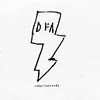 The production team of James Murphy and Tim Goldsworthy has been theobject of some of the most exalted praise that the music press iscapable of bestowing. Their productions and remixes as The DFA and thestring of releases on the DFA label have been so hyped and oversoldthat it's rather hard to wade through all of the hyperbole and justenjoy the music, which is unfortunate, because more often than not itis extraordinary. Building their reputation on a series of incredible12" releases by the new wave of post-punk and mutant disco-influencedgroups such as The Rapture, The Juan Maclean and LCD Soundsystem, theyhave also branched out into decidedly more experimental territories,releasing a full-length LP and a 12" single by the psychedelicnoise-metal improvisers Black Dice. Tracking down their sought-afterreleases has been a little difficult since the explosion of pressattention, so the idea of a CD collecting their 12" output is anappealing proposition. Unfortunately, DFA's Compilation #1seriously jumps the shark, as it is far from a complete collection,with glaring omissions and some annoying inclusions. For a relativelyyoung label that has released only seven singles, you'd think that theywould be able to include all seven tracks and even b-sides on thiscollection. However, they omit almost all of the b-sides (except forthe mysterious inclusion of The Rapture's b-side "Silent Morning"), andbizarrely choose to include an incongruous 15-minute noise track fromBlack Dice's Beaches and Canyons LP. Plus, the disc is short atonly about 60 minutes. If they had removed the extraneous Black Dicetrack and used up the rest of the space on the disc, they could haveincluded The Rapture's new "Killing" single, the killer LCD Soundsystemb-side "Beat Connection," the hallucinatory EYE remix of Black Dice's"Endless Happiness," and maybe even the Morgan Geist remix of TheRapture's "House of Jealous Lovers." Instead, we have a disc made up ofmost (not all) of the a-sides, and two rather bizarre songs thatshouldn't be included. I have no complaint with the music, however. TheJuan Maclean's dirty, bottom-heavy electro-disco tracks are infectiousand charming, without being too heavy-handedly retro. LCD Soundsystem's"Losing My Edge," a hilarious minimal electro ode to hipper-than-thouindie cred, sounds as great as ever. The Rapture's "House of JealousLovers" is still one of the best raw, energetic dance-punk songs youcould hope to hear on a crowded dance floor. Black Dice's primitivemetal-scrapings and This Heat-style abrasive madness make "ConeToaster" a terrific avant-rock side. However, the distinguishing musicconsumer is much better off staying away from this woefully incomplete"compilation", and instead trying to track down the original 12"releases, which boast amazing b-sides, remixes and the same level ofaudio fidelity. The DFA's Compilation #1 is, sadly, a missed opportunity.
The production team of James Murphy and Tim Goldsworthy has been theobject of some of the most exalted praise that the music press iscapable of bestowing. Their productions and remixes as The DFA and thestring of releases on the DFA label have been so hyped and oversoldthat it's rather hard to wade through all of the hyperbole and justenjoy the music, which is unfortunate, because more often than not itis extraordinary. Building their reputation on a series of incredible12" releases by the new wave of post-punk and mutant disco-influencedgroups such as The Rapture, The Juan Maclean and LCD Soundsystem, theyhave also branched out into decidedly more experimental territories,releasing a full-length LP and a 12" single by the psychedelicnoise-metal improvisers Black Dice. Tracking down their sought-afterreleases has been a little difficult since the explosion of pressattention, so the idea of a CD collecting their 12" output is anappealing proposition. Unfortunately, DFA's Compilation #1seriously jumps the shark, as it is far from a complete collection,with glaring omissions and some annoying inclusions. For a relativelyyoung label that has released only seven singles, you'd think that theywould be able to include all seven tracks and even b-sides on thiscollection. However, they omit almost all of the b-sides (except forthe mysterious inclusion of The Rapture's b-side "Silent Morning"), andbizarrely choose to include an incongruous 15-minute noise track fromBlack Dice's Beaches and Canyons LP. Plus, the disc is short atonly about 60 minutes. If they had removed the extraneous Black Dicetrack and used up the rest of the space on the disc, they could haveincluded The Rapture's new "Killing" single, the killer LCD Soundsystemb-side "Beat Connection," the hallucinatory EYE remix of Black Dice's"Endless Happiness," and maybe even the Morgan Geist remix of TheRapture's "House of Jealous Lovers." Instead, we have a disc made up ofmost (not all) of the a-sides, and two rather bizarre songs thatshouldn't be included. I have no complaint with the music, however. TheJuan Maclean's dirty, bottom-heavy electro-disco tracks are infectiousand charming, without being too heavy-handedly retro. LCD Soundsystem's"Losing My Edge," a hilarious minimal electro ode to hipper-than-thouindie cred, sounds as great as ever. The Rapture's "House of JealousLovers" is still one of the best raw, energetic dance-punk songs youcould hope to hear on a crowded dance floor. Black Dice's primitivemetal-scrapings and This Heat-style abrasive madness make "ConeToaster" a terrific avant-rock side. However, the distinguishing musicconsumer is much better off staying away from this woefully incomplete"compilation", and instead trying to track down the original 12"releases, which boast amazing b-sides, remixes and the same level ofaudio fidelity. The DFA's Compilation #1 is, sadly, a missed opportunity.samples:
- The Juan Maclean - By The Time I Get to Venus
- LCD Soundsystem - Give It Up
- Black Dice - Endless Happiness
Read More
- Administrator
- Albums and Singles
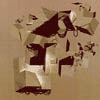 If you haven't heard any of Richard Devine's recorded output up to now, this album is a great place to jump on. Devine has always pushed the envelope of what his tools can do, and with Asect:Dsect we are treated to a version of Devine as mad tinkerer that remains interesting on successive listens the way that some other DSP records do not. Devine's previous outings Lipswitch and Aleamapper visited the extremes of his take on music. The former was a million-mile an hour beat and squiggle fest that was notably absent of a center reference point; a soundtrack for ADD if ever there was one. By contrast, the latter was an exercise in micro-detail exploding out into vast expanses of reverb that demonstrated that there was more to the reigning king of DSP than wonky beats and 128th note programming. With Asect:Dsect, Devine has managed to bring the best elements of those previous records together in a way that is both more accessible and more carefully exploratory at the same time. It's easy to imagine the harsh and often mechanical rhythms that Devine eeks out as simply the music made by machines with Devine at the helm, trying to keep up. But in reality, though his soundscapes and polyrhythms are impossibly inhuman, machines would never make music this confounding. Machines don't take chances, but Devine does and Asect:Dsect is full of imaginative bursts that betray their digital genesis. This is futurism in one of the only ways that it can still be realized in a post-modern world. It's data-rich, full of leaping off points and connecting nodes that take one idea leap over two or three more, and return the listener to the start with a new sense of the territory waiting to be explored. Anyone who has ever clicked through link after link on the web and wound up on a site so arcane that it seems as though it must exist outside the network will understand the kind of journey that Devine is on here. Not every path is a complete success, and in places the experimentation bogs down the beats and synths with a feeling of sensory overload that works against the grain. But most of the time, the songs serve as little soundtracks for synapses firing that even those uninitiated to the world of powerbook rock will understand. There are even moments here that are beautiful, sparse, or understated--three adjecties not usually associated with Devine's brand of electronica. By the album's closer, the tempo has dropped, the melodies have bubbled up to the fore, and the percussion that previously ricocheted as though it were recorded inside a hypercube has settled down to a slow and steady head-nodding groove. Devine's greatest accomplishment with Asect:Dsect is not the volume of plug-ins used or the much-touted 24 bit 96khz production value, but the greater sense of musicality he has brought to game. We are used to classical music that strives to capture a place or time in history through the orchestration of sound, and Devine is working squarely in that tradition. The trick is that he's realized the perfect soundtrack to a time we haven't yet experienced, a futurist fresco of sorts, and diving into that can be confusing to say the least. Everyone should have at least one Richard Devine album to experience the far reaches of sound design at the juncture of human creativity and enabling technology. If you are going to get just one Devine record, make it this one (for now).
If you haven't heard any of Richard Devine's recorded output up to now, this album is a great place to jump on. Devine has always pushed the envelope of what his tools can do, and with Asect:Dsect we are treated to a version of Devine as mad tinkerer that remains interesting on successive listens the way that some other DSP records do not. Devine's previous outings Lipswitch and Aleamapper visited the extremes of his take on music. The former was a million-mile an hour beat and squiggle fest that was notably absent of a center reference point; a soundtrack for ADD if ever there was one. By contrast, the latter was an exercise in micro-detail exploding out into vast expanses of reverb that demonstrated that there was more to the reigning king of DSP than wonky beats and 128th note programming. With Asect:Dsect, Devine has managed to bring the best elements of those previous records together in a way that is both more accessible and more carefully exploratory at the same time. It's easy to imagine the harsh and often mechanical rhythms that Devine eeks out as simply the music made by machines with Devine at the helm, trying to keep up. But in reality, though his soundscapes and polyrhythms are impossibly inhuman, machines would never make music this confounding. Machines don't take chances, but Devine does and Asect:Dsect is full of imaginative bursts that betray their digital genesis. This is futurism in one of the only ways that it can still be realized in a post-modern world. It's data-rich, full of leaping off points and connecting nodes that take one idea leap over two or three more, and return the listener to the start with a new sense of the territory waiting to be explored. Anyone who has ever clicked through link after link on the web and wound up on a site so arcane that it seems as though it must exist outside the network will understand the kind of journey that Devine is on here. Not every path is a complete success, and in places the experimentation bogs down the beats and synths with a feeling of sensory overload that works against the grain. But most of the time, the songs serve as little soundtracks for synapses firing that even those uninitiated to the world of powerbook rock will understand. There are even moments here that are beautiful, sparse, or understated--three adjecties not usually associated with Devine's brand of electronica. By the album's closer, the tempo has dropped, the melodies have bubbled up to the fore, and the percussion that previously ricocheted as though it were recorded inside a hypercube has settled down to a slow and steady head-nodding groove. Devine's greatest accomplishment with Asect:Dsect is not the volume of plug-ins used or the much-touted 24 bit 96khz production value, but the greater sense of musicality he has brought to game. We are used to classical music that strives to capture a place or time in history through the orchestration of sound, and Devine is working squarely in that tradition. The trick is that he's realized the perfect soundtrack to a time we haven't yet experienced, a futurist fresco of sorts, and diving into that can be confusing to say the least. Everyone should have at least one Richard Devine album to experience the far reaches of sound design at the juncture of human creativity and enabling technology. If you are going to get just one Devine record, make it this one (for now).Read More
- Administrator
- Albums and Singles
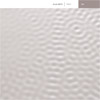
While it collects commissioned pieces from 2003 and 2006 through 2008 (hence the title), all of the various tracks here were created for other works and performances, but are still unified as being crafted by the hand of Carsen Nicolai. While there are a few different approaches used from track to track, never do they feel out of place along-side each other, and both the Alva Noto penchant for abstract composition and almost danceable rhythmic electronics appear here.
 
Opening track "Garment" and "T3 (for Dieter Rams)" both encapsulate the aesthetic of Nicolai’s home label Raster-Noton, beginning with seemingly random electronic fragments that are molded into a tight rhythm as the track plays on.Both feature disparate noise surges and deep, heavy bass pulses with the occasional glitchy click or resonating bell-tone.Both begin with more of a collage sense, the sounds having seemingly little to do with each other.However, the sounds pull together and lock into place, the result is a pseudo-techno work that just demonstrates Nicolai’s ability to clinically sequence the smallest sounds into memorable, almost catchy pieces.
In other pieces, the source isn’t so much a software patch as a piece of organic sound that forms the basis of the work.The two takes of "Argonaut (for Heiner Müller)" are constructed on samples of heavy, bassy strings.In its initial format, it is a slow, additive sequence that slowly brings in mournful digital melodies and soft, white puffs of noise and maintains a sad, bleak quality throughout.The closing "version" take on the piece works from the same recipe, but by including warmer bells and a more complex layering of sound, the piece has a more rejoiceful quality to it, celebrating rather than mourning."Early Winter (for Phill Niblock)" also starts from a sampled string basis (of a Niblock composition), but includes just enough digital elements to give an inhuman quality, and as it continues on it channels a bit of Vangelis’ Blade Runner soundtrack, but composed by the replicants themselves.
The other pieces more inhabit the world of abstract sound collage without a specific organic grounding or traditional rhythmic structure."Stalker (for Andrei Tarkovsky)" brings in the dark tension of the 1979 sci-fi film, meshing heavy bass tones and higher register pieces, all with minor chord stabs to give a bleak feel appropriate for the inspirational material.The short "ANS (for Evgeny Murzin)" is a brief, but live piece based upon the infamous Russian ANS synthesizer that juxtaposes rapidly fluctuating tones with longer, drawn out analog textures.
While the tracks in For 2 may be dedicated and inspired by artists in a variety of disciplines, Nicolai’s devotion to carefully structuring the smallest of sounds into rhythmic passages, as well as the lush exploration of digital and digitally treated sounds unites these pieces into a cohesive whole.Although they have a consistent, unifying feel to them, the tracks are all strong on their own merits, with no sense of filler or padding inserted.Alone or together, Carsten Nicolai’s compositions here shine as exemplary examples of contemporary electronic music.
samples:
 
Read More
- Matthew Spencer
- Albums and Singles
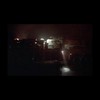 Rhythm can lead, but sometimes it’s anything but enlivening. On his new limited-edition edition EP, Jason Urick creates an atmosphere as driving as it is claustrophobic. The four pieces collected are somewhat repetitive, but nonetheless they have a subtle insistency that sticks in the mind long after the record is finished.
Rhythm can lead, but sometimes it’s anything but enlivening. On his new limited-edition edition EP, Jason Urick creates an atmosphere as driving as it is claustrophobic. The four pieces collected are somewhat repetitive, but nonetheless they have a subtle insistency that sticks in the mind long after the record is finished.
Beat making is a relatively new preoccupation in Urick’s run as a solo-artist. Unlike is last album, the excellent Husbands, he keeps his compositions sparse. Despite this, they have an unsettling air, especially the title track, which is downright sinister. It’s built from a short, patios inflected vocal sample intoning the words "fussing and fighting" over and over again. Urick bends and stretches the sample to the accompaniment of sparse reverb drenched drum programming. Bits of disembodied noise wash in and out of the mix in a narcoleptic haze, apt accompaniment to a late night drive through a blighted cityscape.
The rest of the EP still has the same disembodied quality, but without the explicit menace. It’s as if Urick’s sounds were trapped in their own limited scope, trying to escape the tiny range of motion that he gives them. It’s not until the end of the third track, "Sleeping Bag/Lets make it Critical," that Urick displays the kind of technical grandiosity that he is capable of. Drifts of static pile up and through the noise an airy half melody emerges, providing a sparkling coda to an otherwise unremarkable soundscape. It is the only moment on the record where Urick approaches the density that marks his best work, and while this may be a step backwards for him stylistically, it satisfies in a way that the other tracks do not. The rest seem pale and confused. Despite freshening his approach, Urick’s work on Fussing and Fighting lacks the vitality of his previous work.
Read More

